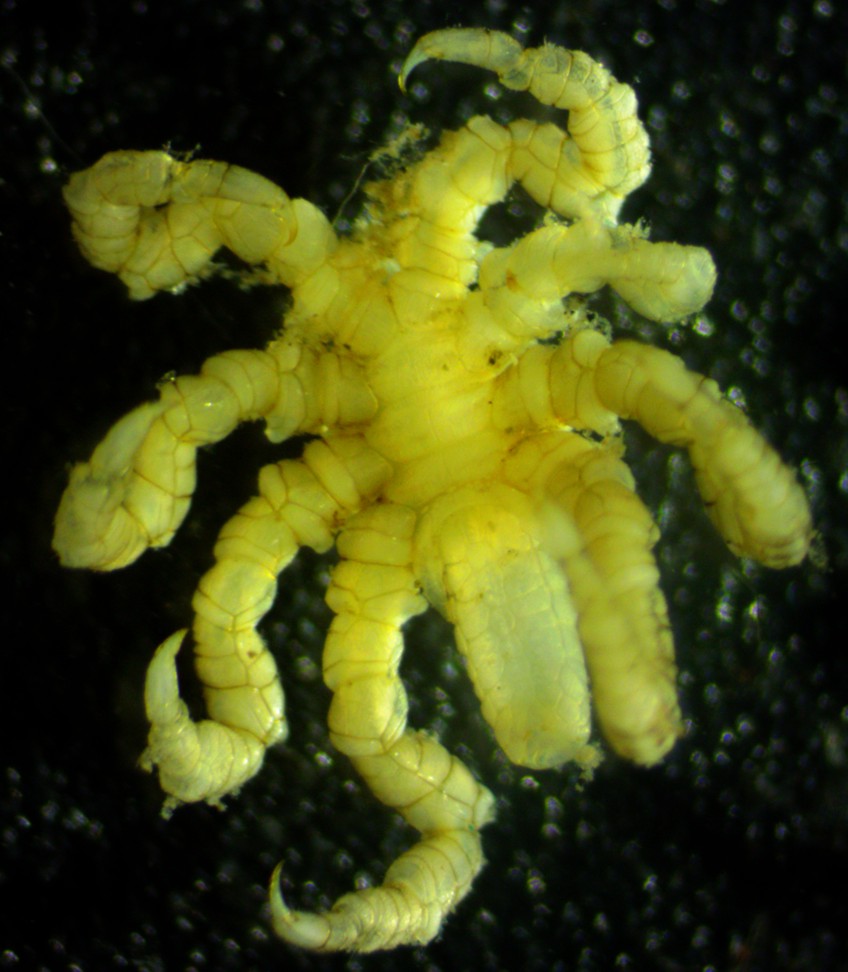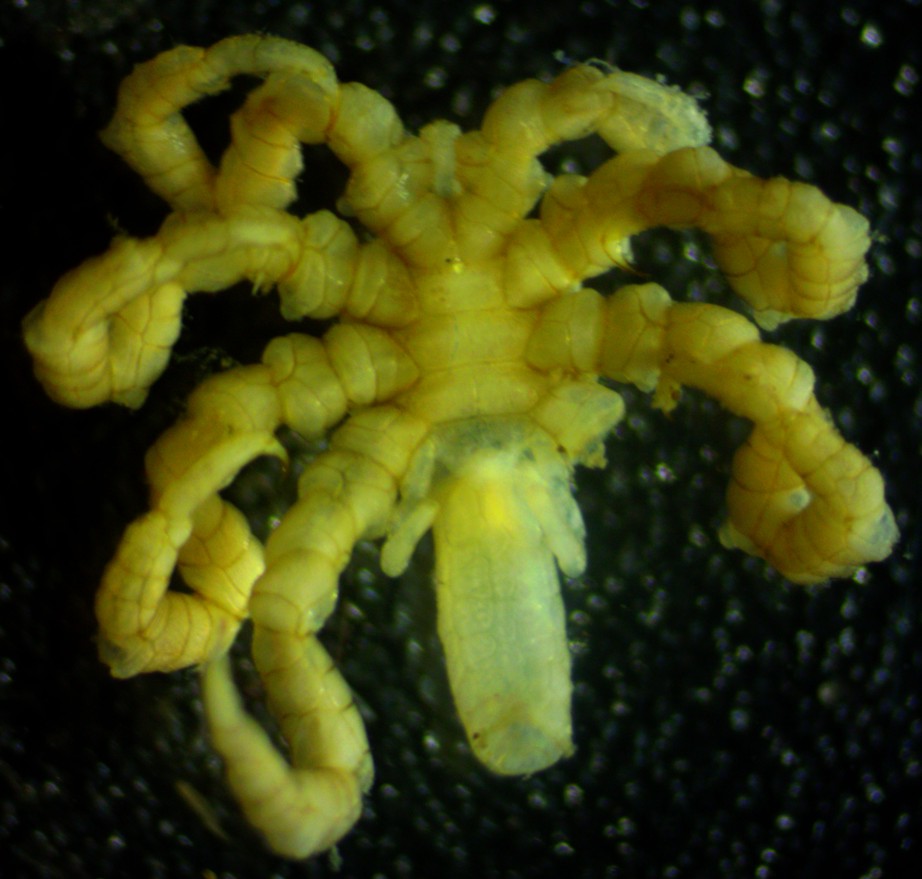Pycnogonum stearnsi Ives, 1892Common name(s): Stearns' sea spider |
|
| Synonyms: | 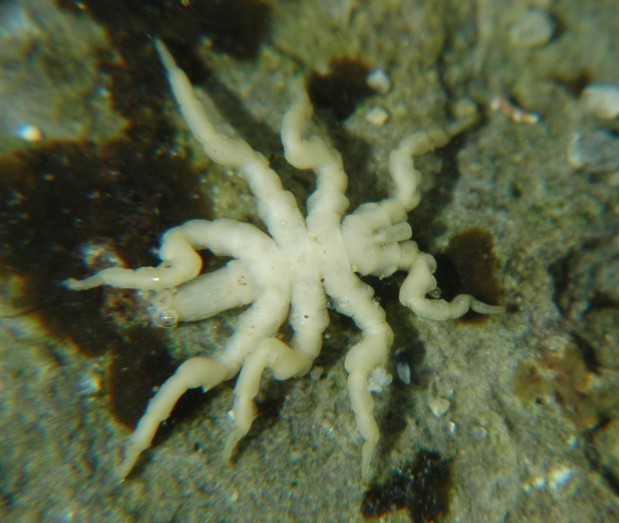 |
| Phylum Arthropoda
Subphylum Chelicerata Class Pycnogonida Order Pantopoda Family Pycnogonidae |
|
| Pycnogonum stearnsi from Little Corona del Mar, CA. Total leg span about 1 cm. Animal was in a tidepool next to the base of an Anthopleura sola anemone. The head with its large proboscis is facing left (there is a bubble at the tip of the proboscis) | |
| (Photo by: Dave Cowles, November 2006) | |
How to Distinguish from Similar Species: Pycnogonum rickettsi is similar in shape and also lacks chelicerae and pedipalps, but its body is usually light brown with dark lines or patches and it has dorsal tubercles which are taller than their diameter.
Geographical Range: British Columbia to southern California; Japan. Most common in central California.
Depth Range: Mid to low intertidal
Habitat: Typically found under rocks, in empty barnacle shells, or on large anemones, especially on Anthopleura xanthogrammica. May also feed or be found on the anemone Metridium senile, on hydroids such as Obelia and Aglaophenia, on ascidians, or in surfgrass.
Biology/Natural History: Males have a pair of accessory (ovigerous) legs for carrying eggs. Females do not have these legs. This species seems to preferentially live on the giant green anemone Anthopleura xanthogrammica. Several individuals may occur on the same anemone (see below). It is one of the largest sea spiders to be found along our coast. The species feeds by jamming its proboscis into the anemone's tissues and sucking fluids. The proboscis has a wide aperture, probably to allow sucking up some particles in its food. Studies of closely related species have suggested that the animal has no heart (it probably pumps its blood by peristalsis).
Family Pycnogonidae is one pycnogonid family in which females lack ovigerous legs entirely. This is true for some other families as well, while in others the females have reduced ovigerous legs. Females release eggs from gonopores which are present on several legs near the base. The male, which is standing over or under her, fertilizes the eggs then gathers them up and sticks them to his ovigerous legs, where he cares for them. The eggs hatch as small protonymphon larvae which can swim. In a related closely related species to this one (P. litorale), the larva loses all three pairs of its larval legs and its proboscis at the fifth molt, then produces the adult proboscis and legs during later molts.
| Return to: | |||
| Main Page | Alphabetic Index | Systematic Index | Glossary |
References:
Dichotomous Keys:Kozloff 1987, 1996
Smith and Carlton, 1975
General References:
Brusca
and Brusca, 1978
Johnson
and Snook, 1955
McConnaughey
and McConnaughey, 1985
Morris
et al., 1980
Ricketts
et al., 1985
Scientific Articles:
Behrens, W., 1984. Larventwicklung und Metamorphose von Pycnogonum
litorale (Chelicerata, Pantopoda). Zoomorphologie
104: 266-279
Tomaschko, K.H., E. Wilhelm, and D. Buckermann, 1997. Growth and reproduction of Pycnogonum litorale (Pycnogonida) under laboratory conditions. Marine Biology 129: 595-600
Wilhelm, E., D. Buckermann, and K.H. Tomaschko, 1997. Life cycle and population dynamics of Pycnogonum litorale (Pycnogonida) in a natural habitat. Marine Biology 129: 601-606
Web sites:
General Notes and Observations: Locations, abundances, unusual behaviors:
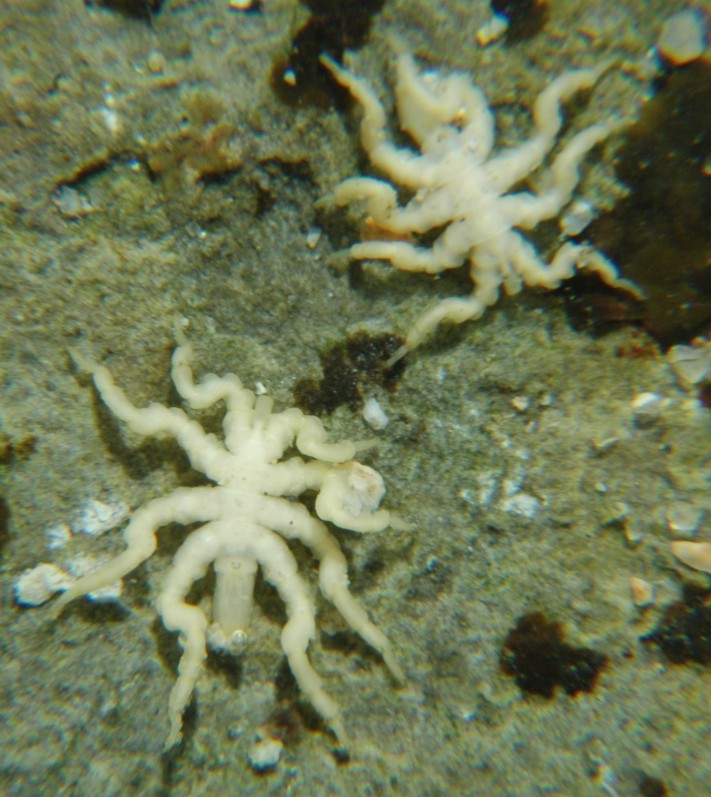
This pair of individuals, which includes the individual shown at the
top of the page, were both on the same anenome.
Though I did not check thoroughly, I did not see ovigerous legs on
either individual suggesting they are both female.
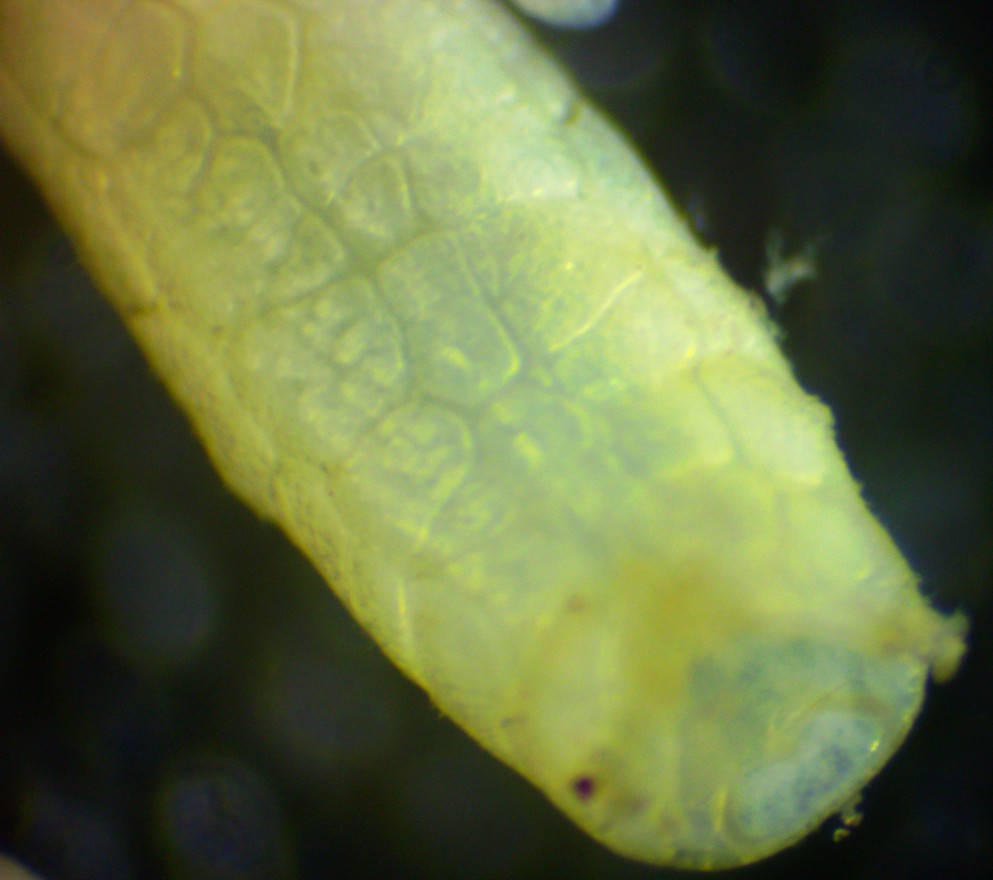
This view shows the underside of the proboscis.
Authors and Editors of Page:
Dave Cowles (2006): Created original page

